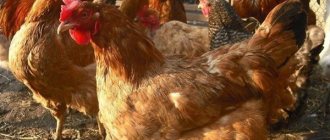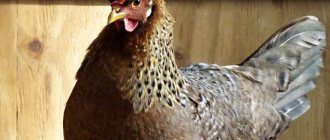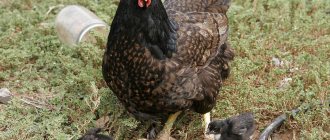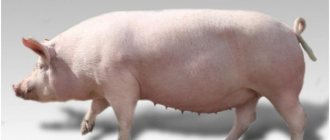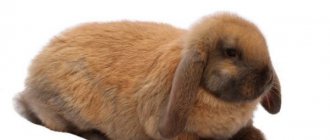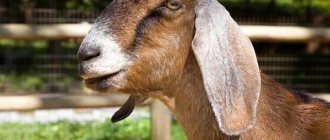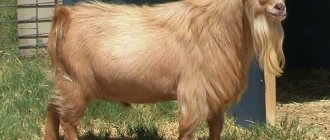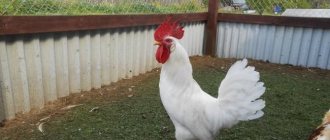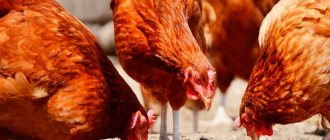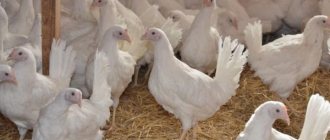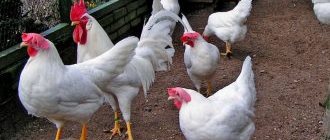Origin story
Photo of the breed:
The Bielefelder breed was bred more than 40 years ago by the German breeder Herbert Rott. The resulting chickens quickly won the love of poultry farmers and farmers in many countries due to their many advantages.
The Bielefelder breed became known to the general public in 1976. Its representatives were unveiled in Hannover at an exhibition as "German Defined". Chickens did not yet have the name we are used to today.
The name “Bielefelder” appeared after its adoption by members of the German Federation of Pedigree Poultry and the drawing up of an opinion on the breed as a whole. The name is associated with the city of Bielefeld in Germany, where the breed was bred. The description of the standard appeared in 1980.
A distinctive feature of Bielefelders is their unusual color. Attractive-looking large chickens with a calm character are not afraid of frost and have good egg production.
To obtain such high characteristics, experts used several breeds of chickens: Welsumer, Rhode Island, Amrox, New Hampshire. Each of them contributed to the formation of a new bird.
Hatching chicks
Bielefelder chickens have a weak brooding instinct, so it is advisable to hatch chickens in an incubator. Fertility rate is high (up to 80%). The hatching percentage of eggs placed in the incubator is 90-100%.
The incubation material must be disinfected, otherwise microorganisms will begin to actively multiply in a humid and warm environment. You can use a bleach solution (15 g/1 l) for disinfection.
Eggs are checked visually and using an ovoscope - specimens with microcracks, two yolks, foreign inclusions inside, liquid white, or a displaced air chamber are not suitable.
The laying is carried out in accordance with the size - large specimens are laid first, after 6 hours the turn of smaller ones comes (this makes it possible to achieve almost simultaneous appearance of chicks).
The temperature in the first 12 hours is maintained at +38.5…+39℃, then it is reduced to +37.8℃ and left at this level until the 15th day. After this, the temperature should be +37.5℃. Turn the eggs at least 6 times a day until the 19th day. The total incubation time is 21 days. Starting from the 3rd day, the masonry is ventilated (2 sessions per day, 5 minutes each). After the chicks hatch and dry out, they are placed in a brooder.
Description of the breed
The Bielefelder chicken breed stands out from other large meat-and-egg breeds due to its unusual and very beautiful plumage color: small stripes on a golden-black color.
The neck, back and head of the roosters are ocher in color, and small white spots are visible throughout the body mixed with black stripes. The plumage of Bielefelders is dense and is absent on the legs.
The body of the rooster is elongated, with medium wings and a wide chest. A rounded belly seems constantly full. The slightly raised tail is clearly visible, especially in combination with completely bare legs.
Males have broad shoulders and a powerful neck, densely covered with feathers. Red earrings of medium size and standard oval shape. The leaf-shaped comb consists of four large teeth and one small one at the ends. Roosters also have an oval beard. An adult weighs about 4-4.5 kilograms.
Bielefelder hens, unlike roosters, have a reddish head and neck, and light brown spots on the sides and belly, which gradually turn into white and black, and then into dark brown stripes on the back.
The plumage, like that of males, is quite wide and dense. Hens have a wider chest and fuller belly, and the body is tilted forward at a smaller angle. An adult chicken weighs 3.5-3.9 kilograms.
Bielefelders have a calm and peaceful character. Without rushing anywhere, they seem to be just strolling around the yard. A characteristic feature of poultry of this breed is the autosex color of day-old young animals.
The poultry farmer immediately knows what gender the chicken that has just hatched from the egg is: hen or rooster. The color of males is predominantly yellow, there are light brown stripes on the back, and a large light spot in the head area. Chickens are a darker color, and they also have clearly visible black stripes on their back and near their eyes.
What are the benefits of breeding a breed?
Let's consider what is good about chickens of the described breed in contrast to other representatives:
- Bielefelders belong to the meat-egg breeds, which means that you are guaranteed to receive not only tasty, high-quality meat, but also a fairly large number of eggs throughout the year.
- By nature, these birds are resistant to various diseases and cold, which gives an obvious advantage over other breeds. So, these chickens are not afraid of frosts down to -15°C.
- With proper nutrition with a sufficient amount of protein, individuals gain weight quite quickly and from an early age.
- Bielefelders are valued for their calm nature - the birds are quite peaceful and friendly, rarely conflicting with their brothers.
The disadvantages of this breed include its demanding conditions of keeping: the bird does not like drafts, so the house should always be warm. In addition, due to their physical and productive characteristics, representatives of the breed can be expensive for the future farmer.
Price
To breed Bielefelder chickens, you can buy eggs from representatives of the breed or already hatched chickens. There are more risks when buying eggs, since it is very difficult to determine whether this is really what you need.
Even specimens without defects that fully correspond to the shape and size of eggs from chickens of a given breed do not guarantee the breed of the chicken.
Buying already matured chicks significantly increases the chances of getting good representatives of the Bielefelder breed.
It is enough to carefully examine each chicken, paying special attention to its color: the plumage of cockerels will be light yellow with a light “hawk” spot on the head, while that of hens will be darker. Even very small laying hens have black stripes around their eyes - another characteristic feature of the breed.
“Getting to know” the parents of the chicks you buy will help avoid disappointment. Whenever possible, you should try to personally assess the appearance of the bird and the conditions in which it is kept.
The average price of a hatching egg is 100-150 rubles; day-old Bielefelder chicks cost 600 rubles per head. Buying a one-month-old chicken will cost an average of 1,050 rubles. At 2 months of age, the price of young animals is 1,500 rubles per head.
Poultry feeding process
In order for individuals to ultimately have a good weight, they need to eat well in large quantities. The food must be complete and contain all the necessary vitamins and minerals. The main products that need to be fed to the bird are:
- A variety of vegetables: cabbage, beets, peas, pumpkin, corn;
- Cereals, as well as bran and oats;
- Various greens;
- Fish flour;
- Crushed chalk and shell rock.
If you breed individuals exclusively for meat, then you need to include special additives in their diet that help increase live weight.
In the first months, chickens need to be given foods that contain large amounts of protein. These include dairy products, boiled eggs, and greens. Starting from one and a half months, it is necessary to feed the bird with finely crushed grains of wheat and barley. If possible, you can add boiled fish to them.
Adults need to be fed three times a day; it is advisable to include a large amount of greens in their lunch meals, and also prepare a mash for them. In the summer, it is recommended to graze the birds on fresh grass, by consuming which they will be able to get the necessary vitamins and minerals. If it is possible to feed the bird with fresh products, then you can refuse dry feed.
As you can see, raising chickens is a fairly simple task, you just need to treat it correctly. After all, if you take into account all the nuances, the profit can be very good. In order to receive a good and stable income from poultry breeding, you can first study tips, videos and photos from experienced farmers.
Reviews from poultry farmers
Breeders set themselves the task of obtaining fast-growing, disease-resistant poultry with high egg production and good taste of meat.
Reviews from Russian poultry farmers indicate that they were completely successful. Among the advantages of the breed, they name the unpretentiousness and calm nature of chickens and the inability to fly. In addition, these birds tolerate our frosts well.
The disadvantages of the Bielefelder breed include a weakened brooding instinct and a short period of maximum productivity.
Advantages and disadvantages of the breed
Bielefelder chickens are gradually winning the sympathy and favor of Russian poultry farmers due to their many advantages. These include:
- rapid weight gain;
- wonderful taste of meat;
- high egg production;
- unpretentiousness of birds;
- ability to adapt to different climatic conditions;
- phlegmatic character.
This breed has few disadvantages, but it is better to mention them. Bielefelder chickens are not very good brood hens and should not be trusted to hatch chickens. Another disadvantage is the late onset of egg laying - by the age of six months. In representatives of large breeds, puberty always occurs later. Farmers do not recommend trying to speed up the egg laying process; this can lead to early exhaustion of the hen and diseases of the reproductive organs.
Productivity and egg production
The Bielefelder chicken breed is highly productive in terms of egg production. Chickens lay eggs almost all the time. In a year, you can collect 190-230 large eggs weighing approximately 60-70 grams with a light brown shell from one bird.
For winter egg production, it is necessary to provide the hens with at least 14 hours of daylight. If it is shorter, the hens will stop laying eggs.
Chickens reach maximum productivity at two years of age if egg production has begun at 6 months.
Egg production rates in a three-year-old bird are declining again and are not returning to their previous figures. Laying hens in the herd are renewed by the age of 3 years or a little earlier.
The rooster should also be changed if the hens are raised from the offspring of the previous generation. The culled birds are slaughtered after fattening. The meat of former laying hens cannot be compared with the meat of 4-12 month old chickens, but it is quite suitable for food.
Young hens should never be fed laying feed to accelerate the onset of egg-laying age or to increase the productivity of the bird. This can cause early emaciation of the chicken.
The Bielefelder is characterized by high rates of growth and weight gain: by the age of one year the cockerel weighs 3 kilograms, the weight of an adult male reaches 5 kilograms. By the age of one and a half years, a chicken can weigh 3.5 kilograms.
What and how to feed the bird correctly
With proper feeding, chickens will lay eggs all year round and gain significant weight. Let's consider some features of poultry nutrition:
1. All feed included in the poultry diet is conventionally divided into carbohydrate, protein, vitamin, and mineral. This should also include whole grains, flour mixture, food of plant, animal and mineral origin (see table):
| Carbohydrates | Protein | Vitamin | Mineral |
| Cereal grains (corn, wheat, millet, barley, oats, sorghum, chumise, etc.), potatoes and root vegetables with melons, cereals and flour mill waste (bran, mill dust). | They contain a lot of protein and are divided into feed of animal origin (fish, meat and bone, meat feather meal, whole and skim milk, cottage cheese) and plant origin (legume grains, cakes, yeast, flour from legumes, herbs and nettles). | These types of feeds serve as a source of vitamins and provitamins, which are present in whole milk, flour from various herbs and tops of vegetable plants, pine flour, carrots, and green grass. | Such feeds serve as a source of minerals: calcium, phosphorus, sodium, chlorine, iron. These include shell, chalk, limestone, feed phosphates, table salt, salts of macro- and microelements. |
2. Particular attention should be paid to the mineral nutrition of poultry . So, to form the shell of one egg, a chicken spends more than 2 grams. calcium and 0.1 g. phosphorus. Good sources of calcium are chalk, mollusk and shell shells, eggshells and limestone.
3. The diet of chickens from which eggs are obtained for hatching young animals must contain feed rich in vitamins and containing easily digestible, complete protein.
4. In an adult bird, plumage changes annually, and it usually begins in late summer - early autumn, and is accompanied by a weakening of the body. Feeding during the molting period should be less abundant than at the height of egg laying, but varied and high in calories. The bird can be fed fish and meat and bone meal, and fresh cottage cheese. You should give shells, slaked lime, chalk, bone meal, eggshells, as well as carrots, pumpkin, potatoes, cabbage and beet leaves, and legumes.
5. The bird eats mash well, into which horticultural waste is introduced - crushed carrion of apples, pears and plums, apple pomace, etc.
Usually the bird is fed 3-4 times a day . There should always be water for drinking in the house and aviary. An approximate daily ration calculated for one head may be as follows (in gr.):
- grain (oats, barley, etc.) – 50;
- flour mixture (oatmeal, barley, wheat bran) – 50;
- hay flour – 10;
- juicy feed (carrots, rutabaga, beets) – 30-50;
- dry protein feed of animal and plant origin (cakes, meat waste, etc.) – 10-15;
- shell – 5;
- bone meal – 2;
- salt – 0.5.
Breeding
There are several ways to obtain Bielefelder birds:
- purchase fresh pedigree eggs for incubation;
- buy day old chicks;
- purchase a bird 2-4 months old;
- obtain offspring from an existing herd naturally.
Bielefelder chickens rarely turn out to be very good brood hens. Their incubation instinct is poorly preserved.
Bielefelders are capable of reproducing without human help, but those who strive to obtain full-fledged representatives of the breed control this process.
In most cases, special incubators are used to incubate eggs. Having laid eggs in them, the owner only needs to monitor the process using appropriate devices.
It is recommended to purchase eggs for incubation from trusted manufacturers with a name and good reputation. Eggs must be of the same laying, equal in size, without defects.
Before placing them in the incubator, they can be stored for no more than 5 days. Eggs must be transported over long distances in gentle conditions at a temperature of +8-+12°C.
The timing of the purchase of eggs is determined taking into account that the young can spend most of their time outdoors, developing in an abundance of sun, fresh air and greenery.
To do this, you need to add the incubation time (22 days) with overexposure in the house for 60 days. Optimal development conditions for the young will be provided by laying eggs for incubation in February-April. By autumn, at such a time, with minimal costs, a herd that has gained slaughter weight is obtained.
Bielefelder chickens do not tolerate dirty floors, bowls or food left in the sun. Young animals can even get sick because of this. When caring for small chickens, it is very important to change the water and wash the feeders, and remove droppings at least once a day.
Bielefelder birds are large in size, so they will need a sufficient amount of space for comfortable placement. This applies to the walk and the inside of the premises.
Bielefelder chickens need to organize conditions so that they can walk without constantly bumping into each other. If space allows, there should be only one individual per 1 square meter.
One should not forget about the rather impressive weight of Bielefelders when organizing perches. If they are placed too high, a falling chicken may be injured. A height of 50 centimeters would be the best option.
The calm disposition and non-conflict nature of the representatives of the Bielefelder breed do not allow them to fight back their more aggressive relatives, who can take food from them, and over time even force them out of their occupied territory.
There is one more important nuance. Roosters placed in different chicken coops cannot be brought together again, as they will compete and oppress each other.
Large Bielefelders require regular walks in an open yard for normal development. If there are no other aggressive animals near the house or chicken coop and there are safe conditions, an excellent solution to the problem would be to walk freely, where the chickens can find their own food.
Such food will be more beneficial and you will be able to save on feed. In hot weather, it is worth placing drinking bowls around the perimeter and trying to provide the birds with free access back to the chicken coop.
To limit the contact of chickens with wild birds, which often spread various infections, you can stretch a canopy over the walking area.
Keeping Bielefelder chicken
There are usually no particular difficulties with keeping Bielefelders. The only problems that may arise are related to the large bone structure. Such powerful birds will require large nests, strong perches, special nutrition and a large walking area.
Aviary
Despite his outward phlegmatic nature, you rarely see a Bielefelder sitting imposingly. The bird has the qualities of an excellent forager. In search of food, chickens do not sit still, but constantly trample, looking for everything that can be eaten. Therefore, the enclosure for walking must have sufficient area. Without proper mobility, the Bielefelder will become fat, which will negatively affect the egg production of the hen.
Bielefelder chickens do not need a high fence at all. A low fence will be sufficient, since large birds, even in their youth, rarely attempt to fly up to the fence. To organize a walking area, you can fill it with sand - then there will be no additional dirt in the chicken coop.
Bielefelder chickens in an aviary
As one option, you can sow the area with greenery. But the gluttony of Bielefelders will quickly lead to the disappearance of the grass. If the yard space allows, you can divide the plot into two - while the chickens are walking on one, new greenery is growing on the other.
Chickens can be harmed by predators such as ferrets. To protect against animals, the net fencing the area should be dug 30-50 cm deep into the ground. There may also be danger from wild birds - birds of prey or sick pigeons and sparrows. By feeding from Bielefelder dishes, pigeons become a source of infection for poultry. A closed top exercise yard will help protect the chickens.
Prices for mesh netting
Rabitz
To protect yourself from predators, you can use a modern repellent device that produces loud sounds and a bright light signal.
Chicken coop
Bielefelder can withstand winter well down to -15 degrees Celsius. If lower air temperatures are expected, the chicken coop should be insulated or heated. The Bielefelder is a large bird and needs a sufficient area of the poultry house. You should not house more than 3 birds per square meter. Crowding the coop too closely will increase the likelihood of infection.
Perches for Bielefelder chickens must be strong and can withstand the considerable weight of the bird. It is not recommended to make two- or three-story perches. The nest for the Bielefelder laying hen is large and comfortable. This could be a deep box lined with straw or hay. One nest for 4 laying hens is enough. If eggs are found outside the nesting area, then it is worth moving the box to another location. It is possible that the nest was placed poorly.
Bielefelder chickens in a chicken coop
Be sure to install lighting in the chicken coop that works for at least 12-13 hours in winter. This regime, combined with good feeding and a warm chicken coop, will allow you to receive eggs from Bielefelder laying hens all year round.
The covering inside the poultry house must be dry, preventing dirt. Dry peat, straw or large sawdust are suitable for this. The litter creates a special microclimate in the chicken coop and helps warm the air inside. Therefore, it is not recommended to change it more than once a year.
Good ventilation in the room is also important so that the chickens do not suffer from stale air. At the same time, drafts are unacceptable. Although Bielefelders have excellent immunity, frequent drafts can cause illness.
Video - Bielefelders from a private farm for walking
Feeding and maintenance
Keeping Bielefelder chickens is not difficult, so both beginners and experienced poultry farmers can breed them. Delicious eggs and high-quality meat will be a reward for proper care and proper maintenance.
Raising chickens
During the first 2 months, chickens are most often kept in the owner's house.
Newly hatched young animals are provided with:
- air temperature about +30°C;
- daylight hours are at least 14 hours;
- 6-7 meals a day;
- clean, very warm water at a temperature of 45-50°C around the clock.
During the first week the chicks can be kept in a box. It is impossible to provide everyone with sufficient nutrition in such conditions, so after 3 days the chicks are transferred to more comfortable conditions. The space for keeping chickens should still be fenced off: it is easier to increase the temperature and light if necessary.
From the 6th day, it is recommended to reduce the temperature to +26-+28°C and gradually every subsequent week by another 3 degrees. By the end of the month the temperature is brought to +18°C. To heat the chickens, it is good to use infrared lamps, which can be left on overnight.
Chickens from three days of age in sunny warm weather can be taken outside, gradually accustoming them to walks. Sunbathing lays the conditions for the proper formation of the skeleton.
Chicks born in the cold season should not be taken outside even for a few minutes. From time to time, caring owners warm the chicks under a UV lamp.
Representatives of the Bielefelder breed grow quickly and gain weight, so they require food containing a lot of protein. Chickens should be given cottage cheese and well-chopped boiled fish several times a week to provide the growing body with calcium and protein.
You can include barley, oats, peas, wheat, and soy into the diet. It is recommended to periodically add chopped vegetables to them.
To provide their birds with protein of animal origin, some poultry farmers make manure heaps, from which over time the birds select worms.
Features of feeding chickens
Proper nutrition is fundamental to growing chicks. A growing body needs to meet its energy needs. In addition, at the age of 4 weeks, the baby fluff begins to change into adult plumage. This process is very long and responsible. It ends before puberty.
In the first 10 days, it is recommended to feed the chickens every 2 hours. The best food for them during this period will be hard-boiled, finely chopped eggs and crumbly cottage cheese, which are mixed with corn or semolina.
One egg or 50 grams of cottage cheese mixed with 50 grams of cereal is enough for 10 chickens. It is useful for chickens to give lightly ground oat flakes, small cereals, chicken feed, adding dry milk in the amount of a quarter of the volume of cereal and a ground multivitamin tablet.
Using such a dry mixture is very convenient. Having poured feed into the feeder, the poultry farmer can go away for a long time, and the chickens will independently regulate their feed intake. The completeness of the crops of all chicks should be checked after each feeding.
From 3-5 days, chickens are accustomed to eating finely chopped greens; from 5-7 days of age, it is good to give crumbly mash in meat, fish broth, and yogurt.
After 10 days, grated carrots, zucchini, pumpkin, and boiled potatoes are added to the diet. Loose wet mash is given at the rate of 30-40 grams per head. The mash should be eaten within 30-40 minutes. Residues must be removed, as sour feed can cause poisoning and death of chickens.
Fresh kefir, whey, and yogurt are very useful for the intestines of chicks. They are given in the morning, and then fresh water is poured into the drinking bowls. Twice a week, as a disinfectant, a weak solution of potassium permanganate is poured into the drinking bowl for half an hour, but in the first days of the chickens’ life, it should not be given unless necessary.
At the age of two months, chickens that have become teenagers are transferred to the chicken coop. If its permanent inhabitants are only Bielefelders, there will be no problems with grinding in: adult chickens will not pay attention to replenishment.
Young animals placed in a mixed herd first grow up in a separate pen. Getting to know each other happens faster and easier while walking. The herd gradually mixes.
At this time, it is very important to exclude contact with sick birds and provide young animals with space at feeders and on perches. It only takes a few days to get used to, but the young animals will require increased attention from the owner during this time.
Feeding adults
The description of the Bielefelder breed and reviews of poultry farmers who have been breeding such chickens for a long time indicate that they are not picky about food and calmly eat almost any compound feed. However, it is worth remembering that for normal growth and development of birds, the food they consume must contain a large amount of vitamins and microelements.
It is necessary to add vegetables to the menu (cabbage, corn, beets, peas, soy). The main dish for poultry is grain, oats, and bran. In the summer, whenever possible, you should include more greens in your diet.
For active egg production, chickens need to constantly add fish and meat and bone meal, and introduce shell rock, chalk, and eggshells into the diet. If you raise chickens solely for eggs, you do not need to use any special nutritional supplements.
You can give them more protein foods: eggs, cottage cheese, greens, and from the age of one and a half months - ground barley and wheat. Feed the bird 2-3 times a day, alternating wet mash and dry rations. In summer, you can completely abandon feed.
Requirements for the care and supervision of birds
It would be most advisable to keep domestic chickens in a simple poultry house. If birds are kept all year round, then the buildings are made more solid. They must reliably protect individuals not only from sudden temperature fluctuations, but also from enemies (animals and birds), be dry and sufficiently light. If such a poultry house is insulated, then in winter, when chickens are kept on deep litter without any heating, the temperature in such a room is stable at no lower than 6°C.
You can provide a bird with a comfortable existence by observing a number of conditions:
- The place to build the poultry house is chosen to be level, with a slight slope to the south, ensuring water drainage. To prevent groundwater from penetrating into the poultry house, drainage grooves up to 50 cm wide are installed around it. Inside the poultry house, the walls are made smooth, using plywood for upholstery or applying dry plaster. Such walls are more convenient to clean and disinfect.
- Peat, sawdust, shavings, straw, tree leaves, and dry coarse sand are used as bedding material.
Use litter in the poultry house: it will eliminate the daily removal of droppings and destroy the causative agents of some infectious diseases.
- In winter, to obtain high egg production from laying hens, it is necessary to use artificial lighting.
- Pay special attention to the insulation of the ceiling, floor, manholes and windows, since heat loss in winter mainly occurs through them.
- Taking into account the fact that the Bielefelder is a large bird, it is necessary to make the chicken coop and aviary spacious so that the chickens can walk freely around the territory.
- Feeders, drinkers and perches should be installed in the poultry house:
- It is best to use metal feeders for wet food, and wooden feeders for dry feed mixtures, chalk and gravel.
- Water bowls must be installed indoors, because this poultry drinks a lot of water. So, on average, young animals drink twice as much water as they consume feed, so there must be constant water supply.
- Perches for chickens are an essential element of a poultry house. For their manufacture, smoothly planed wooden blocks are used. It is important to install perches so that their height from the litter is no more than 50 cm, since Bielefelders are quite large and heavy individuals.
- Another element of poultry house equipment is nests, which will facilitate the collection of eggs. The bird must be trained to fly in nests. Such boxes are installed directly on perches in a darkened part of the room.
- Before placing birds in the chicken coop, the area must be thoroughly washed, cleaned and disinfected. Before treatment, all internal structural elements - floors, equipment and inventory - are washed with a 1.5-2% hot solution of soda ash (150-200 grams of soda per bucket of water). Ash lye is used to wash feeders and perches. To prepare it, you need to dilute 1 kg of stove ash in 5 liters of water, after which the mixture is boiled and diluted by half with water.
- Solarium (aviary) is a fenced area in front of the poultry house for walking chickens. Such an enclosure must be at least half the area of the enclosed space. Taking into account the fact that Bielefelders are quite large individuals, the enclosure should be quite spacious. To prevent the bird from flying out of the solarium, and to isolate it from wild birds, fences up to 2.2 m high are erected. A mesh with cells is stretched over the fence. The territory of the enclosure itself can be covered with sand and fine grass sown.
Diseases and their treatment
Bielefelders' health is quite good, but this does not mean that they do not require proper care. One of the most important requirements is cleanliness in poultry walking areas and inside the chicken coop. Chickens of this breed are very susceptible to overcrowding and dirt; in unsanitary conditions, mass deaths of pets are possible.
With the arrival of spring, it is recommended to immediately begin general cleaning: remove droppings, treat the feeders with hot water and caustic soda.
The bird must be temporarily transferred to another room during the processing period. Don't forget to regularly remove droppings from the chicken coop.
For greater effect, the floor is treated with special disinfectants. Chickens kept in sufficient space, clean and with a nutritious diet, the risk of disease is significantly reduced.
The appropriateness of vaccination of birds must be assessed by a veterinarian. The specialist will give advice on the use of vaccines and the procedure for their use.
Diseases and prevention
The Bielefelder breed has strong immunity; some poultry farmers prefer to vaccinate their chickens; in this case, it is better to consult a veterinarian, he will schedule a vaccination calendar. If the birds are in a clean room that meets all sanitary standards and are provided with a balanced diet, then there should be no health problems. Disinfecting your chicken coop annually will help prevent the spread of parasites and infections.
Important! If some animals show any signs of disease or parasites, they need to be isolated from the herd to prevent the spread of infection.
Price for Bielefelders
The cost of hatching eggs and chicks directly depends on the time of year and region. The price of eggs can vary from 60 to 80 rubles. Chickens cost from 200 to 300 rubles. Adults cost from 700 to 3000.
Conclusion
The Bielefelder breed is not yet widespread in Russia, but those who keep birds respond only positively about them. They do not differ from other breeds in care and nutrition and tolerate frosty winters well. Chickens not only have excellent productivity, but also a decorative appearance.
What you need to know about feeding
Bielefelders are unpretentious in terms of food supply; they are given the same food as other breeds. It is advisable to diversify the diet, balance it in terms of the content of microelements and vitamins in order to ensure the birds’ full development:
- vegetable crops - this can be fodder beets, cabbage, pumpkin, peas or corn;
- various grains;
- green mass;
- bone flour;
- shell rock, feed chalk, gravel.
If the main requirement for chickens is to obtain egg products, then they do not need to be given special additives to their diet that promote weight gain.
Good feeding with a high protein content is important for young animals. This includes cottage cheese products, chopped boiled eggs, chopped grass. From the age of one and a half months, young animals can be given crushed grain and boiled fish.
Adult birds are given food three times a day. In the morning and evening it is compound feed, at lunchtime it is mash and green mass. Chickens will be happy to eat various insects in the walking yard and receive the required amount of protein food. With the onset of summer, many poultry farmers remove feed.
Bielefelders on the walking area
Temperament and vitality
The character of Bielefelder chickens is calm and peaceful. Get along well with other breeds in the yard. They easily become attached to people. Quiet disposition, curious.
Be sure to read:
Breed of dominant chickens - description and characteristics
Roosters, even during the mating period, are rarely aggressive. They have a very loud voice, so they will crow loudly.
The character of Bielefelder chickens is calm, peaceful
The brooding instinct of hens is not developed, so the breed requires the use of incubators for breeding offspring.
The hatchability rate from the incubator reaches 65-75%. Chickens are resistant to diseases and have strong immunity, so almost all of them survive to maturity.
Bielefelder bantams
Registered a little later, the large breed of chickens differs in appearance from its large brother only in a greater variety of colors. The weight of dwarf Bielefelder roosters is 1.2 kg, chickens - 1.0 kg. Egg production up to 140 eggs per year. Egg weight 40 g.
Dwarf Silver Bielefelder
Young Silver Bielefelders
Golden color variant of the Dwarf Bielefelder
Reviews from a few owners of the Bielefelder chicken breed
Valery Konovalov, Furmanovka village
In our Crimean conditions, similar in annual temperatures to Germany, these chickens are simply a godsend. But, of course, I have to feed them all year round. In our summer, green grass can only be found near the river, everything else burns out, and these chickens cannot catch lizards, they are too slow. But in winter I don’t worry if I suddenly forget to close the door to their chicken coop.
The eggs, however, could be laid all year round, but I tried it, then I calculated the cost of the eggs and the cost of the energy consumed and decided that it would be better to lay them rarely in winter, but “for free.” The eggs turned out cheaper than electricity.
Anyuta Maltseva, Karavaevo village
We fell for the advertisement of this breed, which said that chickens do not require an insulated chicken coop in winter and can get their own food. One should probably expect that this is unlikely to be true. But we are dummies. I just really liked the large motley chicken. However, we are not going to give up Bielefelders. More experienced chicken breeders have already enlightened us that all chickens need to be fed, regardless of breed. And stability down to -15 degrees in Russia is like nothing. Therefore, it makes absolutely no difference for which breed of chickens we will have to build a warm chicken coop. Otherwise, I really like these chickens. Both by color and by the fact that they are tame. You can pet them, you can talk to them about life, sitting on the same bench. Well, they lay eggs. But after intimate conversations, I won’t be able to cut them. I'll ask the neighbors.
